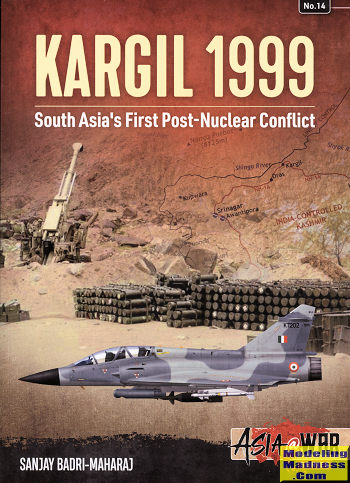 After
the independence of British India, the western and far eastern parts became the
nation of Pakistan. The reason for this was secular differences with Pakistan
being predominantly Muslim. There was a considerable movement of Muslims living
in India to Pakistan as they did not feel safe living in India where there was a
great deal of secular violence.
After
the independence of British India, the western and far eastern parts became the
nation of Pakistan. The reason for this was secular differences with Pakistan
being predominantly Muslim. There was a considerable movement of Muslims living
in India to Pakistan as they did not feel safe living in India where there was a
great deal of secular violence.
Despite this separation, India and Pakistan have never
been what one could consider friends. There have always been disputes about the
Kashmir region of northern India. Wars were fought in 1948 over Kashmir and in
1971 over East Pakistan, which became Bangladesh. Though Kashmir was divided
into a Pakistani and Indian portion with some territory being claimed by China,
there has never really been an easy peace in the area.
During 1999, the military of Pakistan decided that the
time was right to invade a section of Indian Kasmir in the area of Kargil. There
is a line of control separating the two Kashmirs that was supposed to be manned
by outposts by both nations, but in this particular area, the terrain is
extremely rugged and mountainous, so keeping troops in these outposts was
allowed to lapse. This, and a lack of proper surveillance allowed the Pakistani
army to infiltrate the region and build up defenses on the Indian side of the
line. In addition, on the Pakistani side of the mountains, a large number of
heavy artillery units were moved in place to combat the expected Indian
response.
Once the incursion was realized, the Indian army started
moving forces into the area. Initially things did not go well for India as
Pakistani troops held the high ground and were able to provide extremely
accurate artillery fire against Indian forces. The Indian Air Force was called
into operation to provide support, but they were simply not prepared for combat
at these altitudes. In fact, their main strike aircraft, the Jaguar, was unable
to operate this high up, requiring some less useful types to be called in.
Throughout all of the war, the Pakistani Air Force did not cross the border as
that would have escalated things even more. Though both sides had tactical
nukes, neither side used them so the campaign was fully conventional. In the
end, it was Indian air power that made the difference.
The author has done a superb job of telling the story of
this conflict. However, the lack of information from the Pakistani side of
things (and this war is little known in Pakistan), means that we get much of the
story from the Indian side of things. This includes the political situation
prior to the events, the military build up, stories of various combat actions of
infantry in the highest part of the world, and the use of artillery and air
power in these regions. This is all accompanied by an excellent choice of period
photos and maps/charts. There are a few more maps in this book than in some of
the others in this series, and I know I appreciated these being included so I
could keep track of how the campaign unfolded. Also in line with other of
Helion's books, there are a goodly number of profiles of not only aircraft but
other equipment.
I have to honestly tell you that was not really aware of
this particular conflict at the time and found this to be a fascinating read. As
with all books in this series, it is superbly done. That makes it very easy to
recommend to you. Get this one, you will be pleased that you did.
July 2020
Copyright ModelingMadness.com
Review book courtesy of
Casemate Publishing, where you can order your copy
at this
link.
If you would like your product reviewed fairly and quickly, please
contact
me or see other details in the
Note to
Contributors.
 After
the independence of British India, the western and far eastern parts became the
nation of Pakistan. The reason for this was secular differences with Pakistan
being predominantly Muslim. There was a considerable movement of Muslims living
in India to Pakistan as they did not feel safe living in India where there was a
great deal of secular violence.
After
the independence of British India, the western and far eastern parts became the
nation of Pakistan. The reason for this was secular differences with Pakistan
being predominantly Muslim. There was a considerable movement of Muslims living
in India to Pakistan as they did not feel safe living in India where there was a
great deal of secular violence.